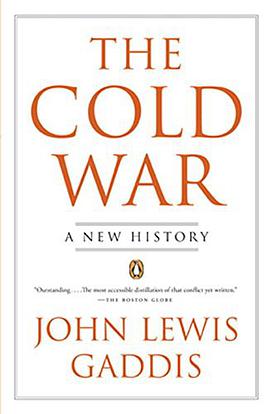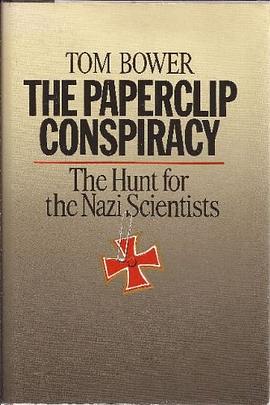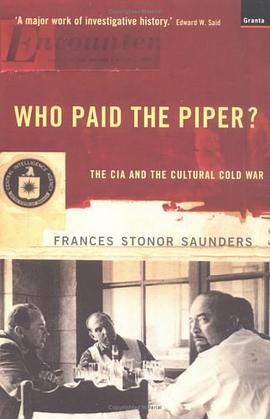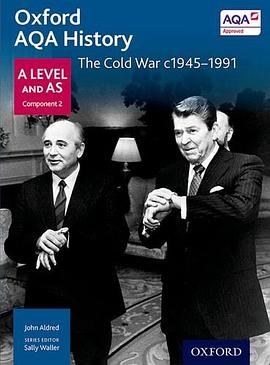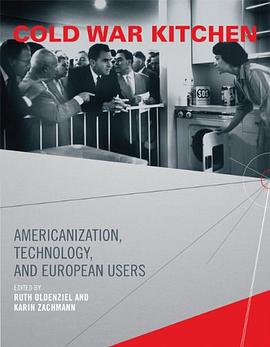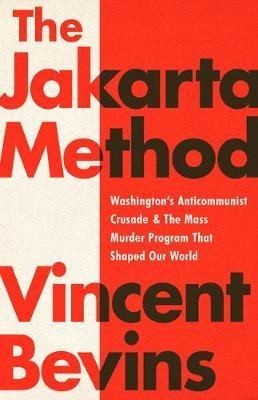冷戰
The Cold War Goodreads 豆瓣 Goodreads
作者:
John Lewis Gaddis
Penguin Books
2006
- 12
The "dean of Cold War historians" ( The New York Times ) now presents the definitive account of the global confrontation that dominated the last half of the twentieth century. Drawing on newly opened archives and the reminiscences of the major players, John Lewis Gaddis explains not just what happened but why —from the months in 1945 when the U.S. and the U.S.S.R. went from alliance to antagonism to the barely averted holocaust of the Cuban Missile Crisis to the maneuvers of Nixon and Mao, Reagan and Gorbachev. Brilliant, accessible, almost Shakespearean in its drama, The Cold War stands as a triumphant summation of the era that, more than any other, shaped our own.
The Paperclip Conspiracy 豆瓣
作者:
Tom Bower
Little Brown & Co (T)
1987
The Origins of the Marshall Plan 豆瓣
作者:
John Gimbel
Stanford Univ Pr
1976
- 7
Who Paid the Piper? 豆瓣
作者:
Frances Stonor Saunders
Granta Books
2000
- 4
Amazon.co.uk Review
In the post-war period, the CIA funded not just the right-wing bits of European intellectual life but also the centre, in order to detach intellectuals from the Left, and this book tells us how. It is touching on the career of Michael Josselson, the principal intellectual bagman who in 1950 became the Congress' Administrative Secretary, and his eventual betrayal by various people like Stephen Spender who scapegoated him. Sanders demonstrates that, in the early days, the Office of Strategic Services (OSS) and the emergent CIA were less dominated by the far right than they later became, and that the idea of helping out progressive moderates--rather than being Machiavellian--actually appealed to the men at the top.
Many intellectuals were still drawn to Stalin's Russia. Saunders superbly traces the crisis of conscience that McCarthyism and its associated bookburning in US libraries caused, and the subsequent rise of more moderate ideals. Saunders does not discuss the way the cult of Kennedy grows out of the same soil as a lot of this stuff--he was an excuse to love America after all. This is an exhaustive account, which, despite neglecting some important side issues, is an essential book. --Roz Kaveney --This text refers to an out of print or unavailable edition of this title.
Synopsis
During the Cold War, writers and artists were faced with a huge challenge. In the Soviet world, they were expected to turn out works that glorified militancy, struggle and relentless optimism. In the West, freedom of expression was vaunted as liberal democracy's most cherished possession. But such freedom could carry a cost. This book documents the extraordinary energy of a secret campaign in which some of the most vocal exponents of intellectual freedom in the West were instruments - whether they knew it or not, whether they liked it or not - of America's secret service.
In the post-war period, the CIA funded not just the right-wing bits of European intellectual life but also the centre, in order to detach intellectuals from the Left, and this book tells us how. It is touching on the career of Michael Josselson, the principal intellectual bagman who in 1950 became the Congress' Administrative Secretary, and his eventual betrayal by various people like Stephen Spender who scapegoated him. Sanders demonstrates that, in the early days, the Office of Strategic Services (OSS) and the emergent CIA were less dominated by the far right than they later became, and that the idea of helping out progressive moderates--rather than being Machiavellian--actually appealed to the men at the top.
Many intellectuals were still drawn to Stalin's Russia. Saunders superbly traces the crisis of conscience that McCarthyism and its associated bookburning in US libraries caused, and the subsequent rise of more moderate ideals. Saunders does not discuss the way the cult of Kennedy grows out of the same soil as a lot of this stuff--he was an excuse to love America after all. This is an exhaustive account, which, despite neglecting some important side issues, is an essential book. --Roz Kaveney --This text refers to an out of print or unavailable edition of this title.
Synopsis
During the Cold War, writers and artists were faced with a huge challenge. In the Soviet world, they were expected to turn out works that glorified militancy, struggle and relentless optimism. In the West, freedom of expression was vaunted as liberal democracy's most cherished possession. But such freedom could carry a cost. This book documents the extraordinary energy of a secret campaign in which some of the most vocal exponents of intellectual freedom in the West were instruments - whether they knew it or not, whether they liked it or not - of America's secret service.
Oxford AQA History for A Level 豆瓣
作者:
John Aldred
/
A Mamaux
OUP Oxford
2015
- 11
Cold War Kitchen 豆瓣
作者:
Oldenziel, Ruth; Zachmann, Karin;
The MIT Press
2011
- 1
Richard Nixon and Nikita Khrushchev's famous "kitchen debate" in 1958 involved more than the virtues of American appliances. Both Nixon and Khrushchev recognized the political symbolism of the modern kitchen; the kind of technological innovation represented in this everyday context spoke to the political system that produced it. The kitchen connects the "big" politics of politicians and statesmen to the "small" politics of users and interest groups. Cold War Kitchen looks at the kitchen as material object and symbol, considering the politics and the practices of one of the most famous technological icons of the twentieth century. Defining the kitchen as a complex technological artifact as important as computers, cars, and nuclear missiles, the book examines the ways in which a range of social actors in Europe shaped the kitchen as both ideological construct and material practice. These actors--from manufacturers and modernist architects to housing reformers and feminists--constructed and domesticated the technological innovations of the postwar kitchen. The home became a "mediation junction" in which women users and others felt free to advise producers from the consumer's point of view. In essays illustrated by striking period photographs, the contributors to Cold War Kitchen consider such topics as Soviet consumers' ambivalent responses to the American dream kitchen argued over by Nixon and Khrushchev; the Frankfurter Kuche, a European modernist kitchen of the interwar period (and its export to Turkey when its designer fled the Nazis); and the British state-subsidized kitchen design so innovative that it was mistaken for a luxury American product. The concluding essays challenge the received wisdom of past interpretations of the kitchen debate.
The Kitchen Debate and Cold War Consumer Politics 豆瓣
作者:
Sarah T. Phillips
/
Shane Hamilton
Bedford/St. Martin's
2014
- 1
The Jakarta Method Goodreads 豆瓣
作者:
Vincent Bevins
PublicAffairs
2020
- 5
The hidden story of the wanton slaughter -- in Indonesia, Latin America, and around the world -- backed by the United States.
In 1965, the U.S. government helped the Indonesian military kill approximately one million innocent civilians. This was one of the most important turning points of the twentieth century, eliminating the largest communist party outside China and the Soviet Union and inspiring copycat terror programs in faraway countries like Brazil and Chile. But these events remain widely overlooked, precisely because the CIA's secret interventions were so successful.
In this bold and comprehensive new history, Vincent Bevins builds on his incisive reporting for the Washington Post, using recently declassified documents, archival research and eye-witness testimony collected across twelve countries to reveal a shocking legacy that spans the globe. For decades, it's been believed that parts of the developing world passed peacefully into the U.S.-led capitalist system. The Jakarta Method demonstrates that the brutal extermination of unarmed leftists was a fundamental part of Washington's final triumph in the Cold War.
In 1965, the U.S. government helped the Indonesian military kill approximately one million innocent civilians. This was one of the most important turning points of the twentieth century, eliminating the largest communist party outside China and the Soviet Union and inspiring copycat terror programs in faraway countries like Brazil and Chile. But these events remain widely overlooked, precisely because the CIA's secret interventions were so successful.
In this bold and comprehensive new history, Vincent Bevins builds on his incisive reporting for the Washington Post, using recently declassified documents, archival research and eye-witness testimony collected across twelve countries to reveal a shocking legacy that spans the globe. For decades, it's been believed that parts of the developing world passed peacefully into the U.S.-led capitalist system. The Jakarta Method demonstrates that the brutal extermination of unarmed leftists was a fundamental part of Washington's final triumph in the Cold War.

